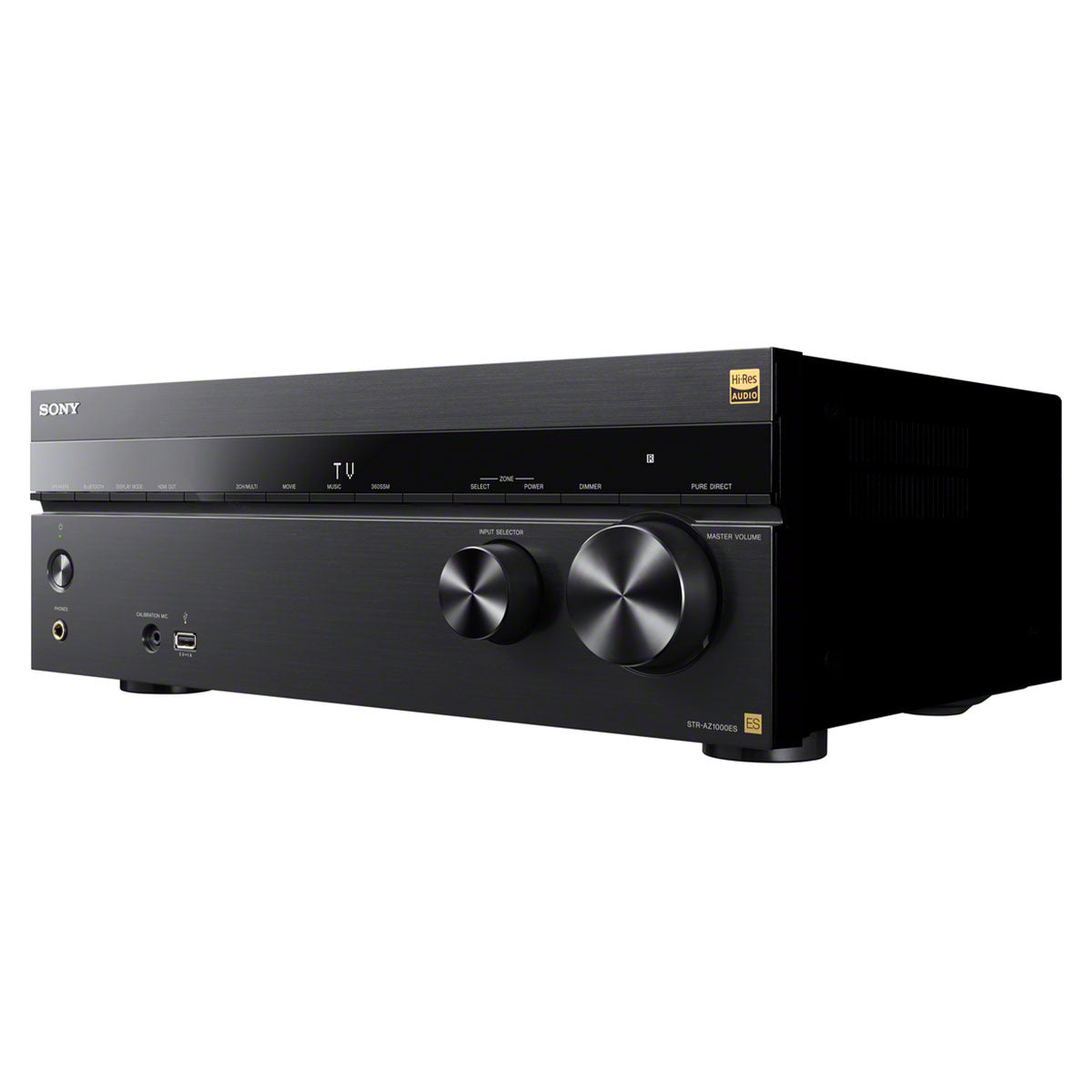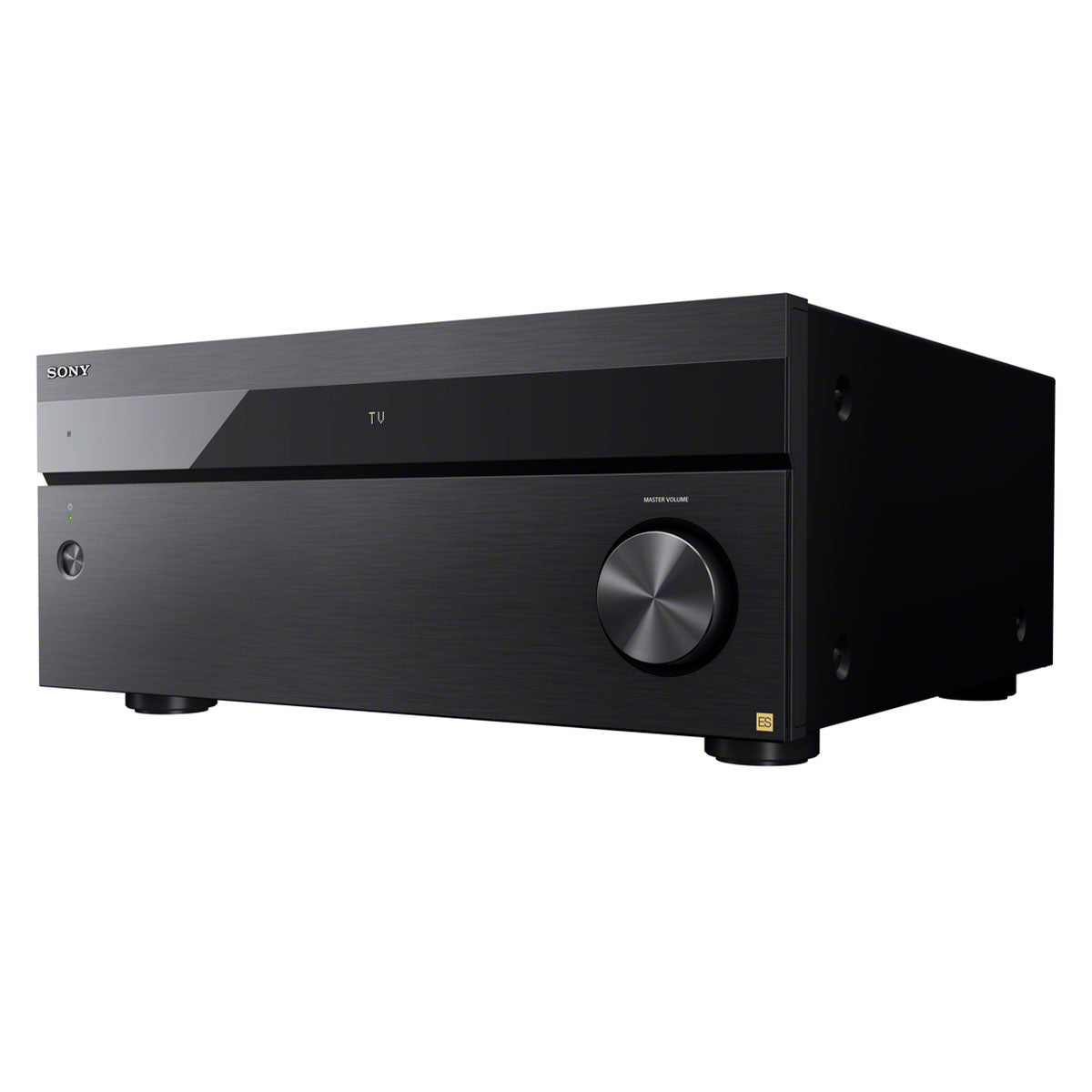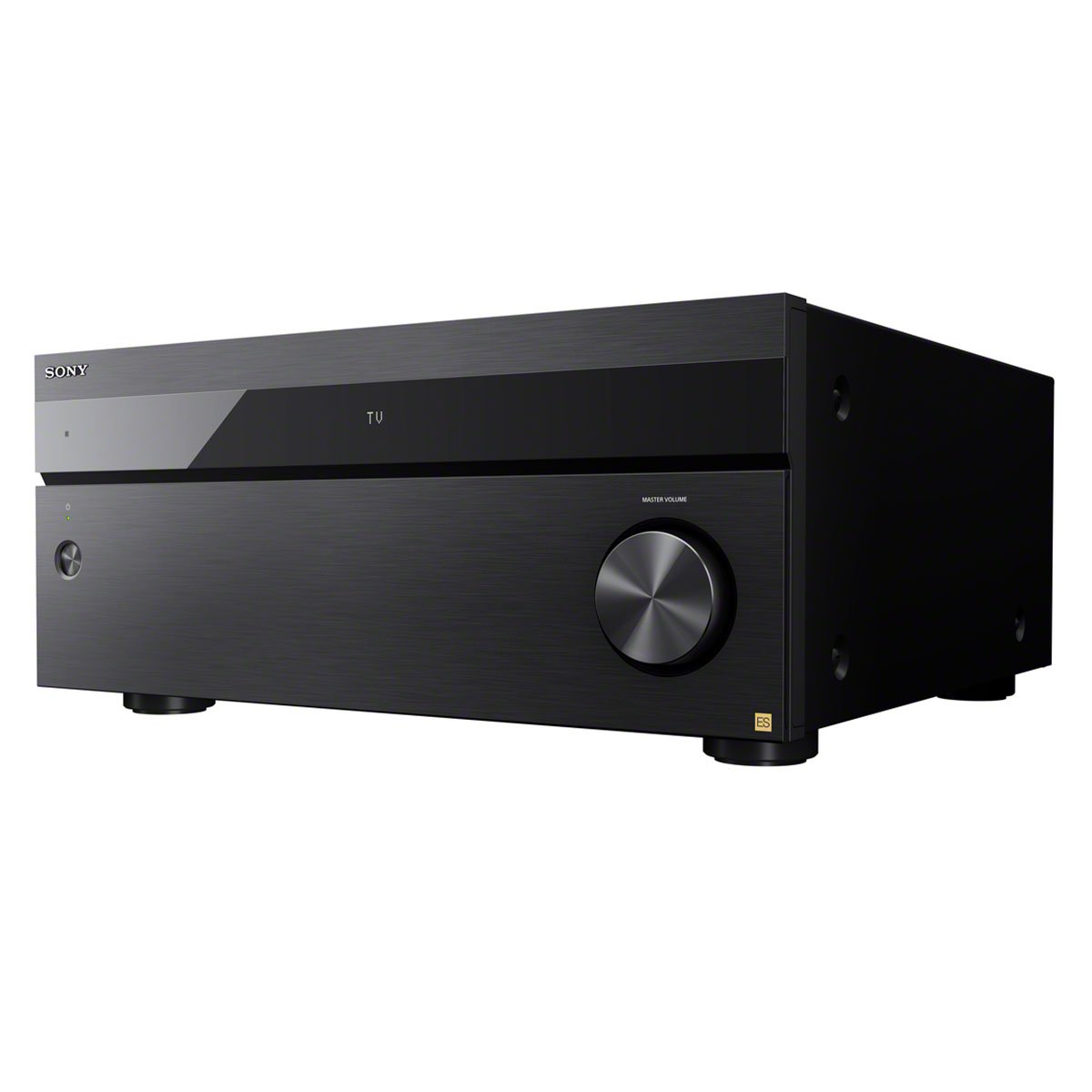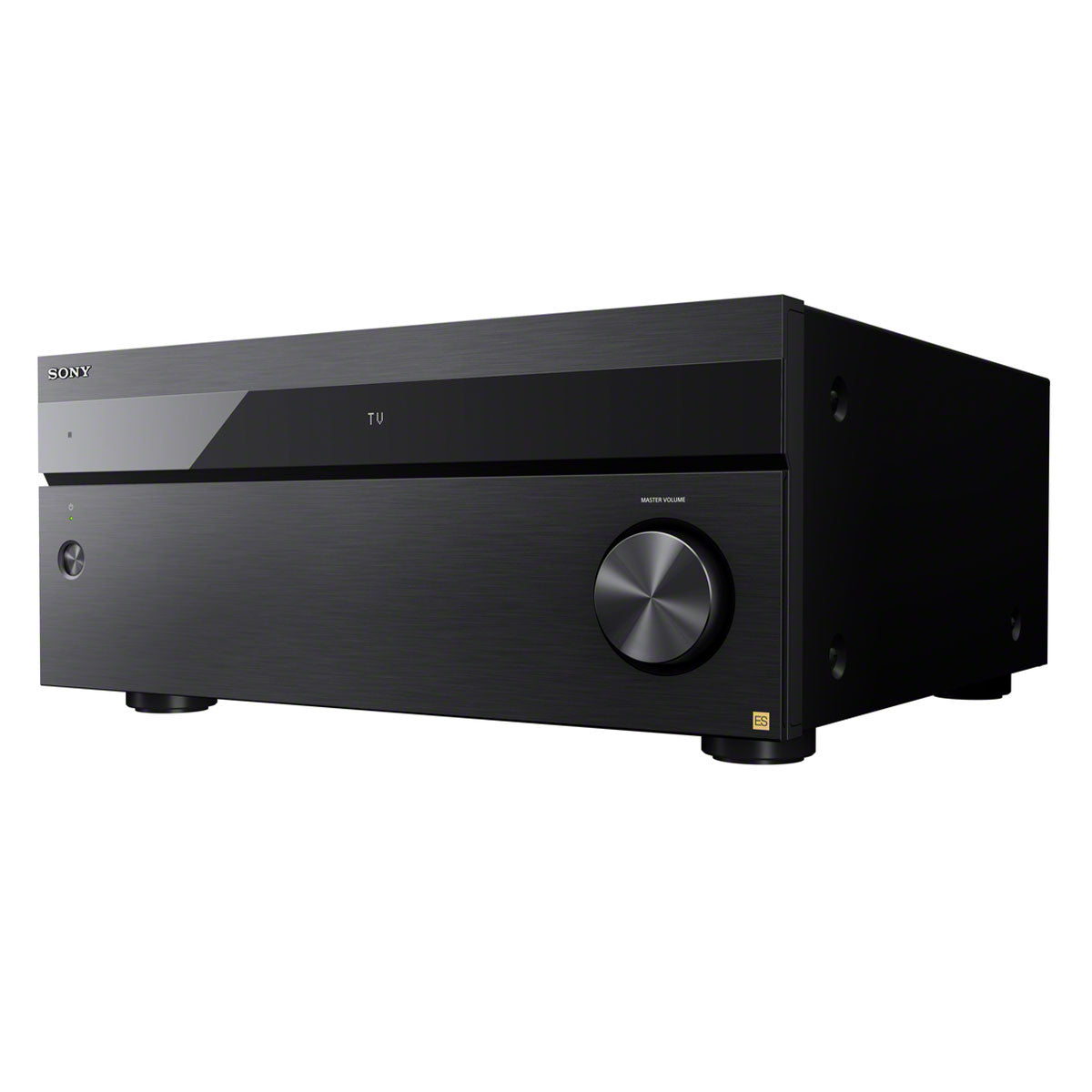Performance
When we first lifted the AZ5000 out of the box and felt its heft and then looked inside and saw what looked like a really nice amp section, we could not wait to test it out in a two channel audio system to see how it sounded. The result was stunning! The AZ5000 had a very open and effortless presentation with a warmth that almost reminded us of a tube sound. The Sony engineers did a great job of making this super musical. While it did not have the ultimate bass control of the McIntosh amp we had in this system, it was extremely good for a receiver. It will also not outdo the rhythm and pacing quality you get with British integrated amps, but we did not expect that out of a home theater receiver anyway.
When you get into the price range of the 5000 and 7000 we do wish Sony had given the option for multiple subwoofers. There are ways to get around this we go over in our subwoofer setup & calibration video, but this feature is becoming more prominent. We did suggest to Sony they could through software use the zone outs for this and we will be interested to see if they figure out a way to do it.
We set the STR-AZ5000 up in one of our demo theaters to test out. This is an all B&W CT series 5.1.4 system. In this room the screen is up pretty high and we have no rear speakers. This enabled us to check out both the phantom rear tech and the center lift. We first went through all of the distance measurements manually. The one screen guide was great as it even throws up green lines on your display when you are measuring from there to give you a guide. We then set up the included microphone, which has two wings with a clearly labeled left and right mic. Even the auto calibration will ask for some of the measurements we did earlier. You do two passes with two different points for the microphone that are impossible to mess up as the little stand has cut outs for the Sony mic. We also like the fact the whole little assembly had a threaded insert for a tripod stand.
After all of these are done, you get a choice of some interesting EQ settings. You can go for flat, Sony Engineer, or Front Reference, where it tries to match the surround speakers more to your fronts. After that, if you do not choose Front Reference there is another screen that asks if you want to match the right and left speakers together. We wound up going for Engineer for most of our listening. As we expected, we did have to go back in and redo the distances the auto calibration system came up with as some were off by several feet, but this is no surprise as most systems like this do not nail the distances. It also changed our midsized surround and Atmos speakers to full range which we flipped back to small at 80 Hz.
We played a few scenes for Atmos effects we were very familiar with and the Sony did just a fantastic job with these. We were especially impressed with how things tracked across and above us. There is no doubt, the surround sound processing power inside and all the data you give the receiver really enables it to lay down an incredibly immersive sound field. The great soundfield, how good it sounds in two channel, and the very high end build quality put this as one of the better AVR’s on the market.
However, we were not as impressed with the center lift as we had hoped. There are different levels of effect you can add, but even with the smallest amount turned on, the processing made it sound like the dialog was out of phase. The dialog did move up into the screen, but if you are sensitive to phase accuracy, you will not like it on.
The phantom rear tech was a bit more interesting. This did give us a bigger sense of sound behind us, but with some added phasey effects. Most people will probably like this turned on if they do not have rear speakers though and it gives you two settings you can flip between, one for concerts and one for movies.
We wish we would have had a way to test out the dual center technology to hear how it worked. This could be very interesting for systems with tall screens and we will try to give that a test in the future.
The wait has been long for new Sony ES receivers, but it looks like it was really worth it. These units, especially from the STR-AZ3000 and up, are built like tanks, sound amazing and with all the information you can feed it about your speaker distances put out one of the most immersive sound fields we have heard.










































 Home Theater
Home Theater Speakers
Speakers Tower Speakers
Tower Speakers
 Bookshelf Speakers
Bookshelf Speakers
 Center Channel Speakers
Center Channel Speakers
 Wall & Ceiling Speakers
Wall & Ceiling Speakers
 Surround Speakers
Surround Speakers
 Dolby Atmos Speakers
Dolby Atmos Speakers
 Subwoofers
Subwoofers
 Soundbars
Soundbars
 Speaker Stands & Mounts
Speaker Stands & Mounts
 Components
Components Home Theater Receivers
Home Theater Receivers
 Surround Sound Processors
Surround Sound Processors
 Power Amps
Power Amps
 Movie Sources
Movie Sources
 TVs & Projectors
TVs & Projectors Televisions
Televisions
 Projectors
Projectors
 Projector Screens
Projector Screens
 TV & Projector Mounts
TV & Projector Mounts
 Seating & Furniture
Seating & Furniture Home Theater Seating
Home Theater Seating
 Media Cabinets
Media Cabinets
 A/V Racks & Shelves
A/V Racks & Shelves
 Accessories
Accessories
 Acoustic Treatments
Acoustic Treatments Absorption Panels
Absorption Panels
 Bass Trap Panels
Bass Trap Panels
 Diffusion Panels
Diffusion Panels
 Acoustic Treatment Packages
Acoustic Treatment Packages
 Cables & Accessories
Cables & Accessories HDMI Cables
HDMI Cables
 Analog Cables
Analog Cables
 Digital Cables
Digital Cables
 USB Cables
USB Cables
 Speaker Cables
Speaker Cables
 Subwoofer Cables
Subwoofer Cables
 Power Management
Power Management
 Featured & Deals
Featured & Deals Best Sellers
Best Sellers
 Sale
Sale
 Home Audio
Home Audio Outdoor Speakers
Outdoor Speakers
 Portable & Bluetooth
Portable & Bluetooth
 Wireless Speaker Systems
Wireless Speaker Systems
 Computer Speakers
Computer Speakers
 Powered Speakers
Powered Speakers
 Integrated Amplifiers
Integrated Amplifiers
 Power Amplifiers
Power Amplifiers
 Stereo Preamplifiers
Stereo Preamplifiers
 Stereo Receivers
Stereo Receivers
 Streaming Media Players
Streaming Media Players
 Digital-to-Analog Converters
Digital-to-Analog Converters
 CD Players
CD Players
 Outdoor Entertainment
Outdoor Entertainment Outdoor Subwoofers
Outdoor Subwoofers
 Turntables
Turntables Manual
Manual
 Automatic
Automatic
 Phono Cartridges
Phono Cartridges Moving Coil
Moving Coil
 Moving Magnet
Moving Magnet
 Moving Iron
Moving Iron
 Mono
Mono
 Phono Preamps
Phono Preamps MC Compatible
MC Compatible
 MM Compatible
MM Compatible
 Record Cleaning & Care
Record Cleaning & Care Stylus Care
Stylus Care
 Cleaning Machines
Cleaning Machines
 Record Cleaning Fluid
Record Cleaning Fluid
 Record Sleeves
Record Sleeves
 Isolation Systems
Isolation Systems Turntable Setup Tools
Turntable Setup Tools
 Turntable Cables
Turntable Cables
 Record Weights
Record Weights
 Turntable Mats
Turntable Mats
 Headphones
Headphones In-Ear Headphones
In-Ear Headphones
 On-Ear Headphones
On-Ear Headphones
 Over-Ear Headphones
Over-Ear Headphones
 Wireless Headphones
Wireless Headphones
 Gaming Headsets
Gaming Headsets
 Headphone Amps & DACs
Headphone Amps & DACs Digital Audio Players
Digital Audio Players
 Smart Home
Smart Home Deals
Deals Limited Time Deals
Limited Time Deals Deals by Category
Deals by Category